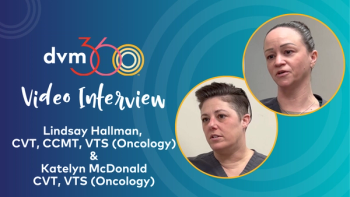
- dvm360 August 2021
- Volume 52
Looking ahead: The future of veterinary medicine
From the "new normal" to the "new future," discover the positive impacts of COVID-19 on veterinary medicine.
Throughout the COVID-19 pandemic, the veterinary profession has demonstrated resiliency and adaptability. In fact, grocery stores and restaurants have modeled the high-quality customer experience that we provide to our clients through curbside care. It’s pretty spectacular what we’ve accomplished during one of the worst pandemics in our lifetime. I’ve been conversing with colleagues across the country and around the globe about transitioning from the “new normal” to the “new future” and I love it. Here are 4 reasons why you will too.
- Enhanced safety and cleaning protocols. We have instilled first-class sanitary and disinfection protocols in hospitals to help minimize the transmission of not just COVID-19, but other bacterial and viral agents. In fact, now many clinics have innovative technologies such as ultraviolet radiation to help destroy pathogens in veterinary hospitals. Newer standard operating procedures have also been developed to ensure our clients’, staff members’ and pets’ safety.
- Powerful physical exam tools. How many times has your temperature been checked during this pandemic? How many screenings have you walked through? The pandemic has allowed for the successful implementation of thermography which helps to detect inflammation in pets. This is just one of the many innovative tools that have enhanced and increased the value of physical exams in veterinary medicine.
- Enhanced workflow efficiency. Initially, curbside felt like a distraction to our everyday workflow. But look how far we’ve come! I’ve spoken to countless colleagues who plan to maintain curbside check-in for technician visits, surgical drop-offs, and medication/food refills.Some practices have even included a column dedicated to curbside appointments in their practice management software scheduler. This may be something to consider implementing at your veterinary practice.
- Flex scheduling. Employers have provided a day for veterinarians and support staff to focus on virtual care (telemedicine consults), lab work and client callbacks, social media content creation. Additionally, they have allotted time for attending continuing education courses.
I invite you to share with our dvm360® team what the future of veterinary medicine looks like for you and your team. What challenges have you and your team overcome during this difficult time? What are your leapfrogs for the remainder of 2021? Our profession will encounter future obstacles but we will overcome them together like we have done in the past and will continue to do in the future!
Articles in this issue
about 4 years ago
Case report: canine spinal cord nephroblastomaover 4 years ago
Extraocular myositis in a young pit bullover 4 years ago
Minimalist design, maximum effectover 4 years ago
IVSA and Vetstream announce a collaborative partnershipover 4 years ago
Pet Releaf debuts professional product line with SentesaNewsletter
From exam room tips to practice management insights, get trusted veterinary news delivered straight to your inbox—subscribe to dvm360.





